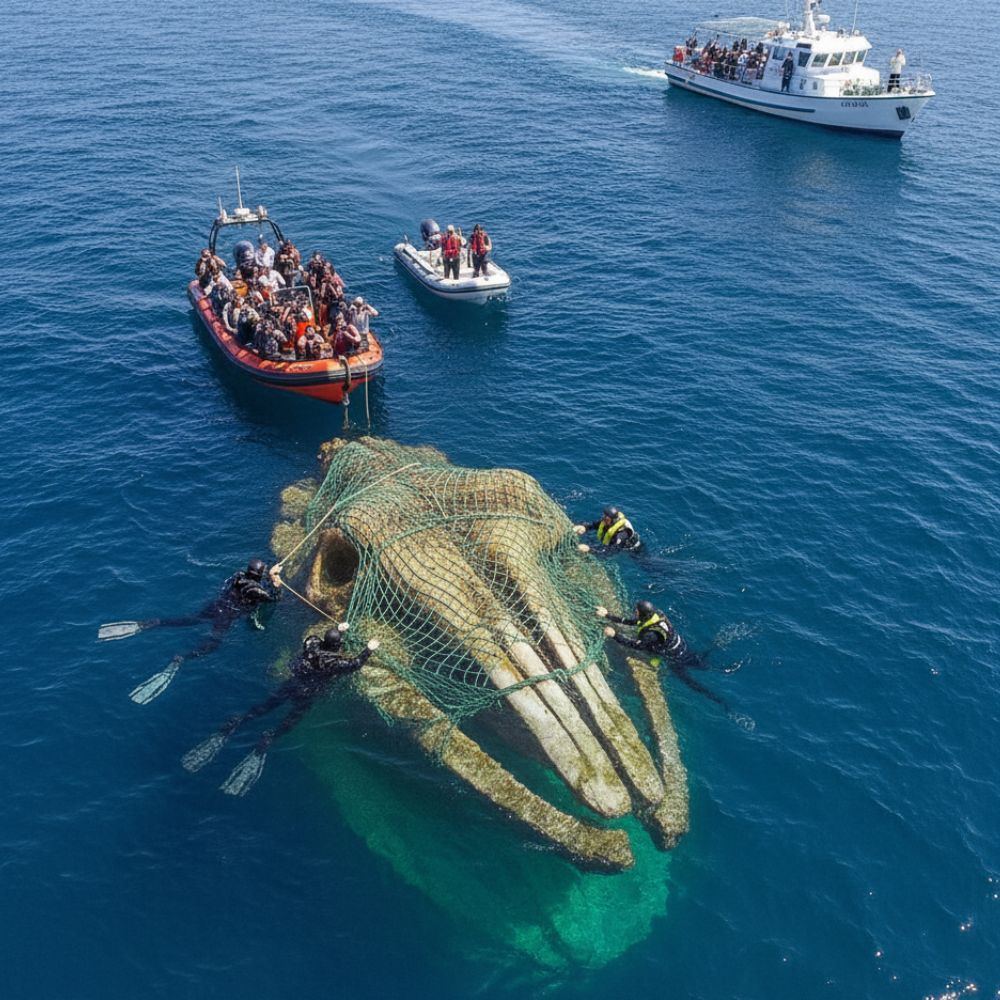The Leviathan of the Ligurian Sea: A Colossal Discovery from the Depths

In the tranquil, azure waters of the Ligurian Sea, divers and marine archaeologists have uncovered an extraordinary find: the ancient skeleton of a massive whale, now dubbed the “Leviathan of the Ligurian Sea.” This colossal fossil, partially entangled in an old fishing net and buried beneath layers of sediment, represents a remarkable glimpse into prehistoric marine life and the oceanic ecosystems that thrived thousands of years ago. The discovery has captivated scientists and enthusiasts alike, offering a rare underwater window into the deep past.
A Daring Underwater Recovery

Recovering the Leviathan required a coordinated effort involving expert divers, specialized lifting equipment, and multiple support vessels. The fossil had to be carefully disentangled from the fishing net and preserved as it was lifted from the seafloor, ensuring that delicate bones remained intact. This meticulous operation not only demonstrated technical skill but also highlighted the importance of preserving fragile marine fossils, which can quickly deteriorate if handled improperly.
The skeleton’s sheer size is awe-inspiring. Preliminary measurements suggest it rivals the largest whale species known today, with massive vertebrae and elongated rib structures hinting at the creature’s immense proportions. Its discovery underscores the diversity and scale of ancient marine life in the Ligurian Sea region, which was once home to species now lost to the fossil record.
Insights into Prehistoric Marine Life
The Leviathan of the Ligurian Sea provides invaluable insight into the prehistoric oceans of the Mediterranean basin. Fossils like this help scientists reconstruct ancient ecosystems, understand the evolution of marine species, and trace environmental changes over millennia. Studying the bones’ structure and wear patterns can reveal information about the whale’s diet, migration patterns, and even interactions with early human populations, particularly in regions with a long history of maritime activity.
Moreover, this discovery contributes to our knowledge of oceanic megafauna and their role in shaping marine ecosystems. By comparing the Leviathan to modern whale species, researchers can explore how marine life has adapted to changing climates, sea levels, and ecological pressures over thousands of years.

Bridging Science and Public Fascination
The Leviathan of the Ligurian Sea has captured the imagination of the public as well as the scientific community. Its dramatic recovery, visualized in photographs and videos, conveys the majesty and mystery of the deep ocean, while raising awareness about the importance of marine conservation and the preservation of submerged cultural and natural heritage.
This discovery also highlights the potential for further underwater archaeological and paleontological research in the Mediterranean. As scientists continue to explore these waters, additional fossils and remnants of ancient ecosystems may come to light, reshaping our understanding of prehistoric marine life.
Conclusion
The unearthing of the Leviathan of the Ligurian Sea is a landmark discovery in marine archaeology and paleontology. Its colossal skeleton offers a rare and intimate glimpse into the prehistoric oceans, revealing the scale, diversity, and complexity of marine life thousands of years ago. Beyond the scientific insights, the recovery of this ancient giant reminds us of the oceans’ enduring mysteries and the treasures they still hold beneath the waves. The Leviathan’s resurrection from the depths is not merely a recovery of bones — it is a revival of a forgotten world, where giants once ruled the seas.











